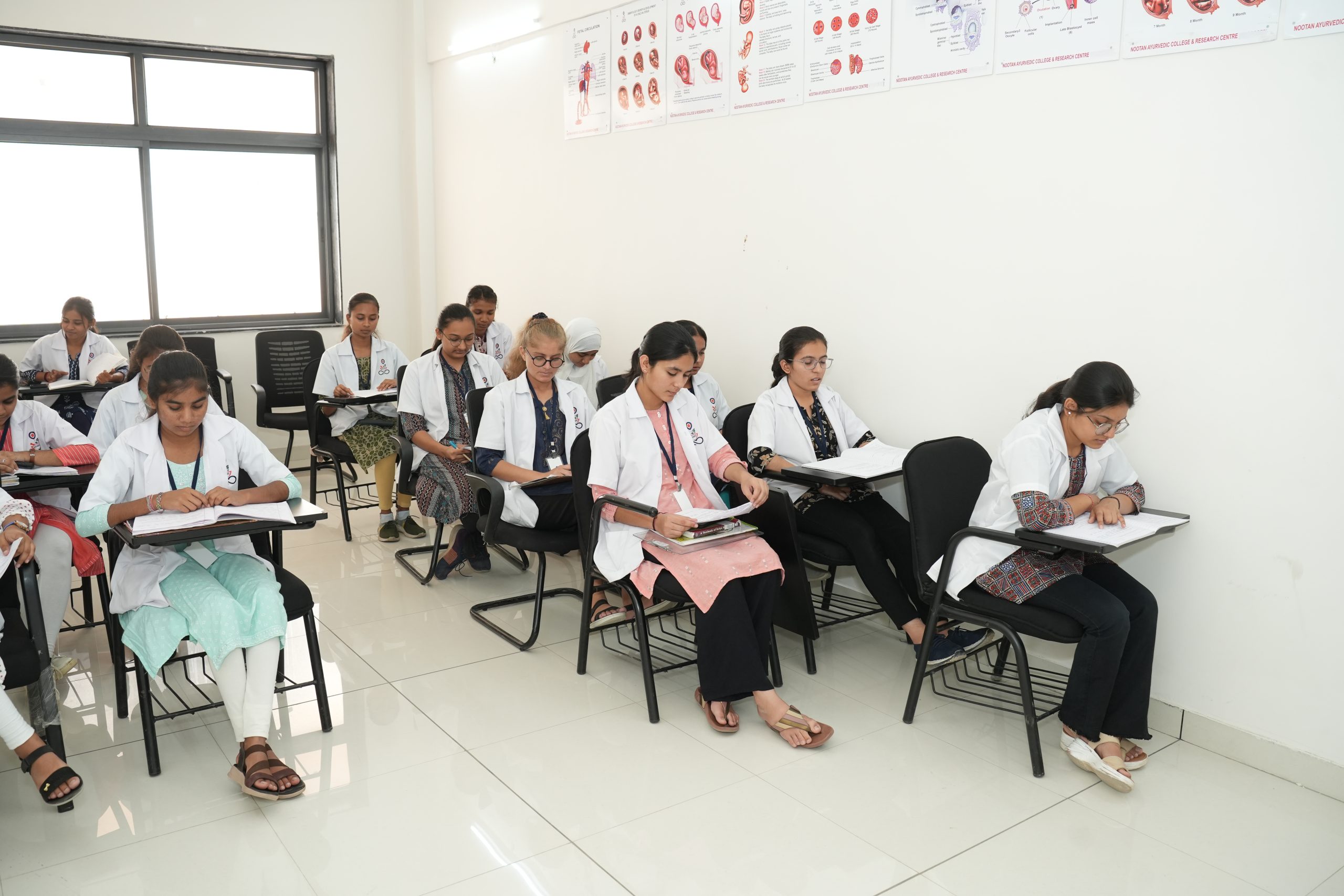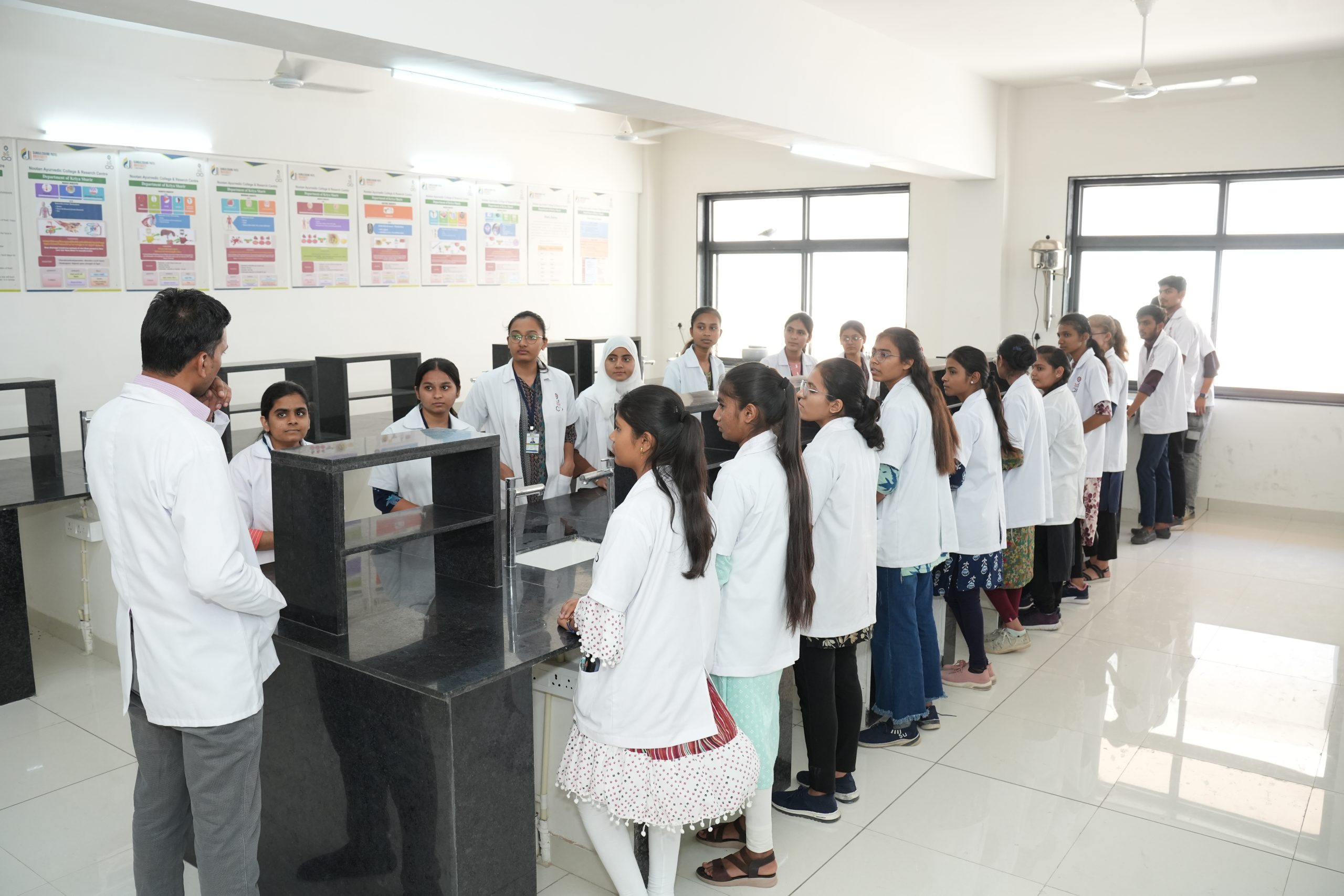KRIYA SHARIR

Dr. Vaibhav
Professor

Dr. Supriya A. Bankar
Associate Professor

Dr. Lalit Meena
Assistant Professor
1. Introduction
The Kriya Sharir department in Ayurveda plays a pivotal role in understanding the physiological and functional aspects of the human body. It focuses on the principles and mechanisms underlying the body’s functioning, emphasizing the unique Ayurvedic perspective on anatomy, physiology, and health.
Meaning of Kriya Sharir
“Kriya” translates to “function” or “action,” while “Sharir” refers to the body. Together, Kriya Sharir delves into the functional dynamics of the body as described in Ayurvedic texts. It provides insights into how the Doshas (Vata, Pitta, Kapha), Dhatus (tissues), Malas (waste products), and Agni (digestive fire) interact to maintain balance and health.
Core Concepts
1. Tridosha Theory:
The department extensively studies the three fundamental bio-energies:
- Vata: Governs movement and
- Pitta: Responsible for metabolism, digestion, and
- Kapha: Manages stability, structure, and Understanding their balance and imbalance is crucial for diagnosing and treating diseases.
2. Sapta Dhatu (Seven Body Tissues):
Kriya Sharir explains the formation, nourishment, and functioning of the seven tissues: Rasa (plasma), Rakta (blood), Mamsa (muscle), Meda (fat), Asthi (bone), Majja (bone marrow), and Shukra (reproductive tissue).
3. Agni (Digestive Fire):
This concept revolves around the transformative processes in the body, including digestion and metabolism. Agni’s proper functioning is essential for health, as it governs the conversion of food into energy and tissue.
2. Vision
To be a center of excellence in the understanding and dissemination of Ayurvedic principles related to human physiology (Kriya Sharira), fostering holistic health and well-being through integration of traditional wisdom and modern advancements.
3. Mission
- Academic Excellence: To impart in-depth knowledge of Kriya Sharira (Ayurvedic physiology) through innovative teaching methodologies and hands-on training, enabling students to become skilled practitioners and researchers.
- Research and Integration: To conduct high-quality research on Ayurvedic physiological concepts and integrate them with contemporary scientific knowledge for the benefit of global health.
- Community Health: To promote the application of Kriya Sharira principles in preventive healthcare, diagnosis, and treatment strategies for achieving Swasthya (health) in individuals and communities.
- Collaborative Growth: To establish interdisciplinary collaborations for advancing understanding and practice of Ayurvedic physiology in modern healthcare systems.
- Cultural Preservation: To preserve and propagate the authentic teachings of Ayurveda as described in classical texts, while making them relevant to current healthcare challenges.
4. Meaning of Kriya Sharir
“Kriya” translates to “function” or “action,” while “Sharir” refers to the body. Together, Kriya Sharir delves into the functional dynamics of the body as described in Ayurvedic texts. It provides insights into how the Doshas (Vata, Pitta, Kapha), Dhatus (tissues), Malas (waste products), and Agni (digestive fire) interact to maintain balance and health.




